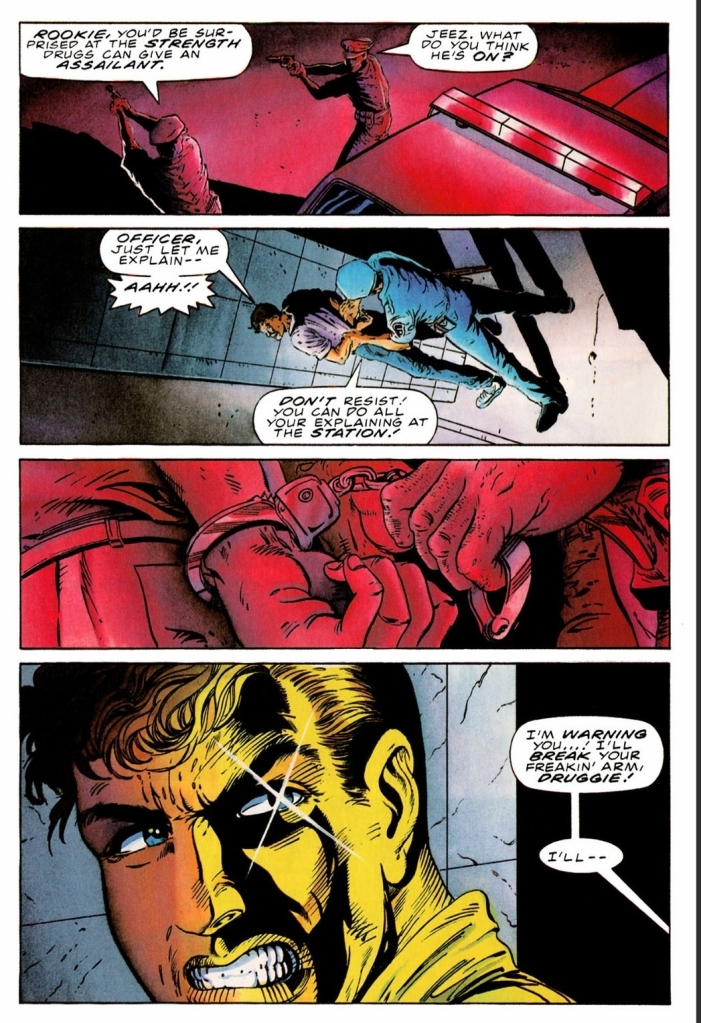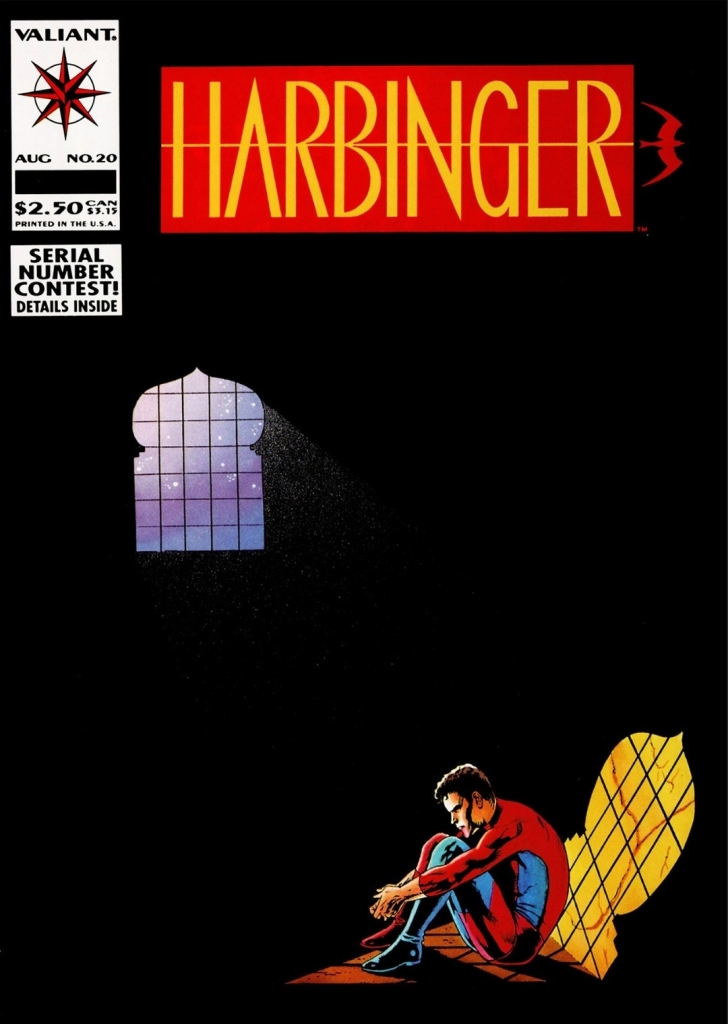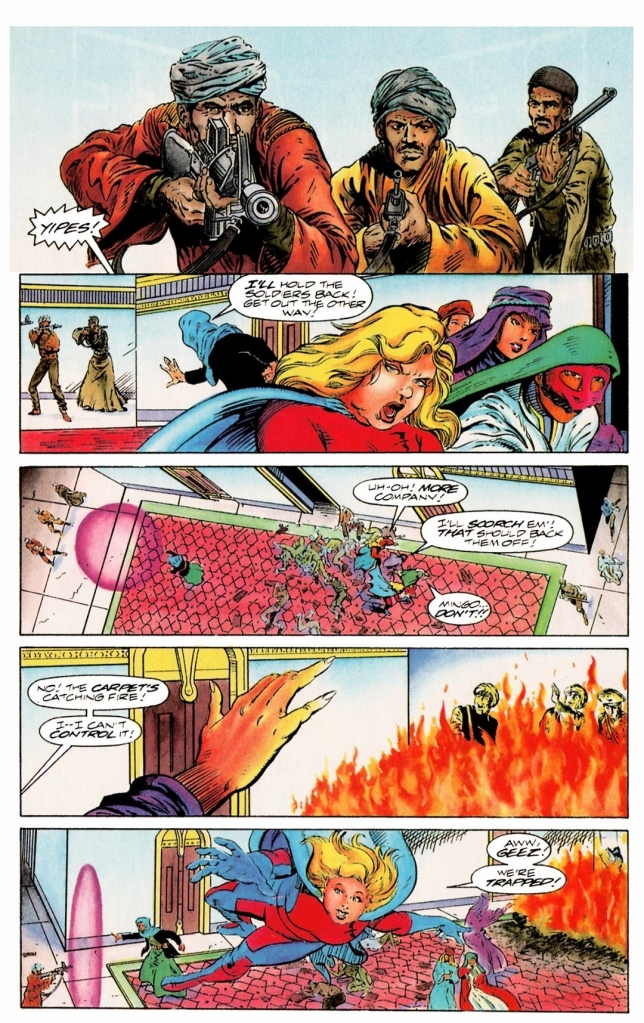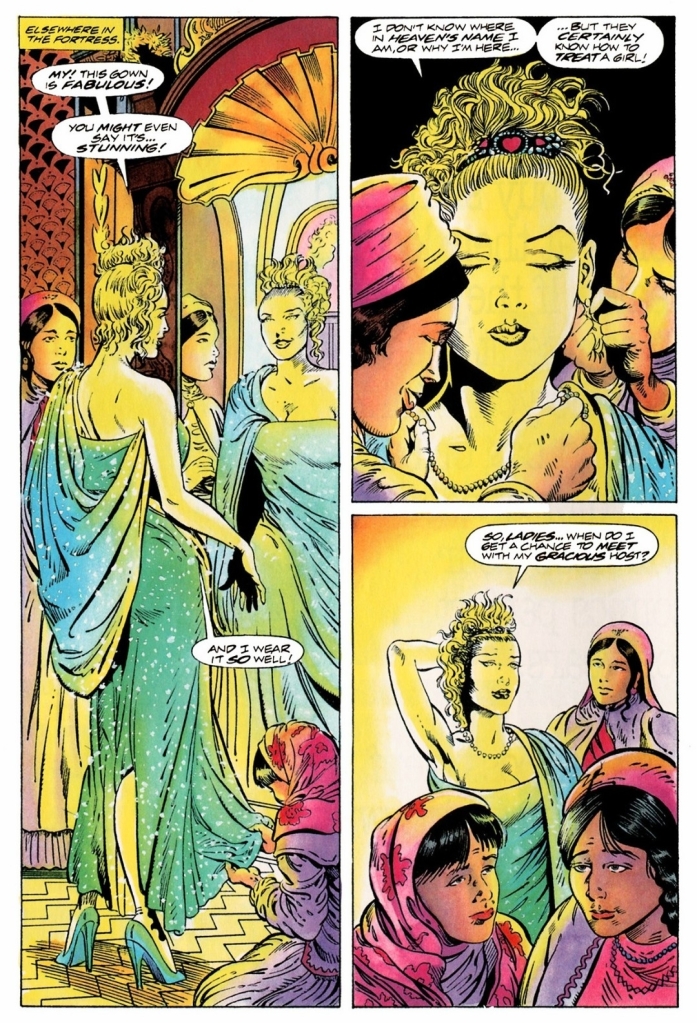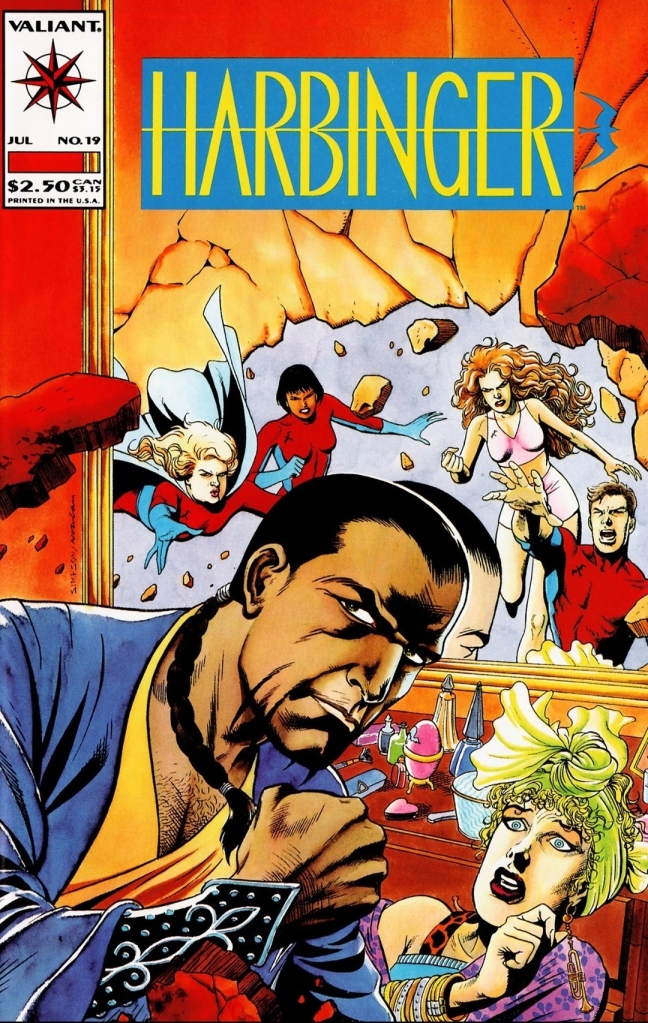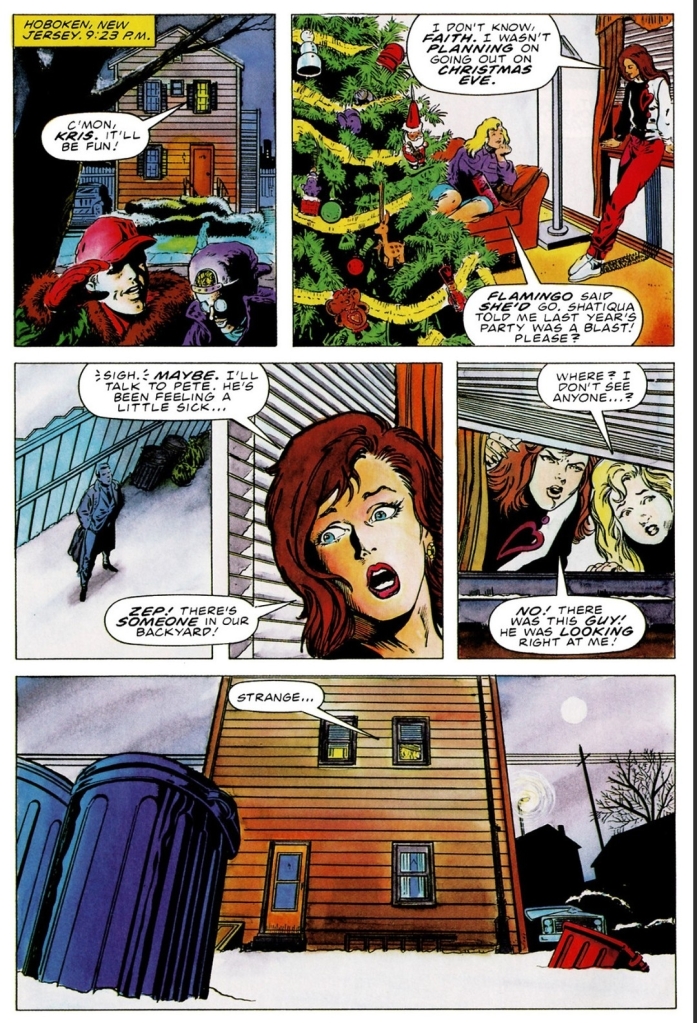Disclaimer: This is my original work with details sourced from reading the comic book and doing personal research. Anyone who wants to use this article, in part or in whole, needs to secure first my permission and agree to cite me as the source and author. Let it be known that any unauthorized use of this article will constrain the author to pursue the remedies under R.A. No. 8293, the Revised Penal Code, and/or all applicable legal actions under the laws of the Philippines.
Welcome back superhero enthusiasts, 1990s culture enthusiasts and comic book collectors! Today we go back to the early 1990s and explore a part of the Valiant Comics shared universe through the Armorines monthly series.
In my previous retro review, the armored Marines and their US Navy SEALs managed to survive from the destruction of the submarine deep under the sea as they managed to complete their goal. One of the Armorines – Sirot – got separated from them and found himself in the presence of aliens who have been organizing secret operations on Earth, including the recent destruction of X-O Manowar’s armor. Knowing that their teammate is missing, the Armorines went back to the water on a search-and-rescue mission.
With those details laid down, here is a look back at Armorines #4, published in 1994 by Valiant Comics with a story written by Jorge Gonzalez and drawn by Jim Calafiore.
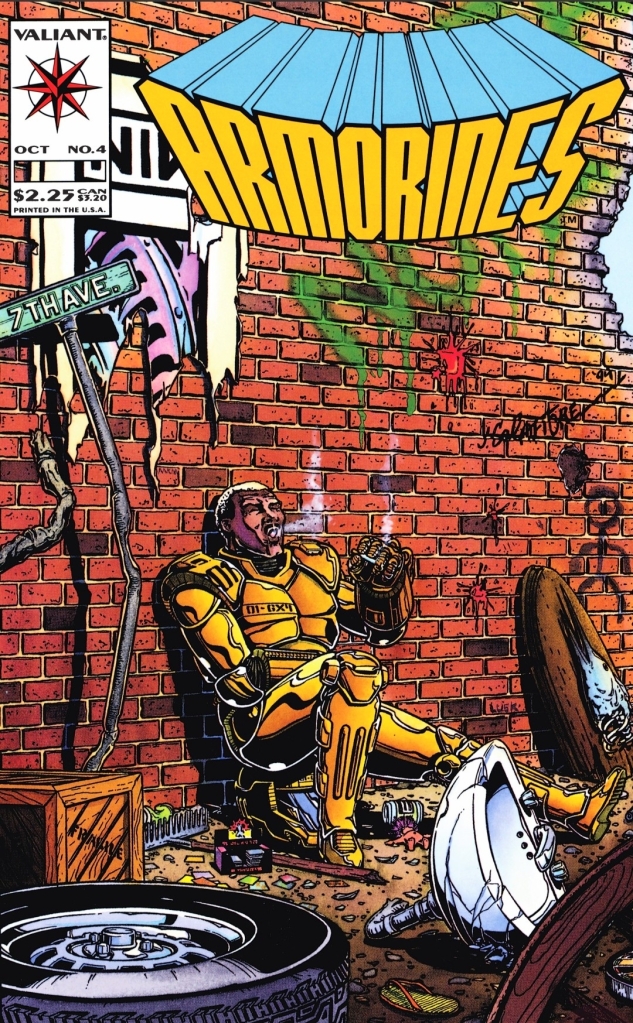
Early story
The story begins inside one of the training domes located just outside Camp Pendleton in California (note: now a Commie-filled state). Teammates Gunny and Sirot engage in a close combat training session using the specialized technology provided to them by Dr. Zhan who carefully watches the statistics. As the session goes on, Sirot sarcastically tells the older Gunny that Senator Ackerman wants him off the Armorines as soon as their superior General Kendall feels the other recruits are properly trained. Sirot mocks him over his age (38-years-old).
Behind closed doors, Senator Ackerman tells General Kendall that even though the Armorines were successful with the mission in Australia and even managed to uncover a nest of aliens, the team were all more than capable without Gunny in their unit. Kendall defends Gunny and stressed that the man is their team’s most experienced member. Ackerman states that once the alien problem is over, he will force Gunny to retire…
Quality

To be clear, this story is more focused on the characters and is also a suitable build-up for the next turn of events ahead of the Armorines. As with issue #1, Gunny is the closest thing this series has to a lead character and he gets a good amount of character development scenes even though the story showed the other characters. Quite conveniently, the creative team used the military base setting to shift focus on the other Armorine team members similar to what was shown in Hollywood movies or TV shows about military personnel. There is the military club setting where the officers are relaxing and socializing with each other. There were also scenes showing specific soldiers at their respective residences where their true personalities (note: private life moments) are emphasized. All of these were done with solid writing and good artwork.
Without spoiling the details, I can say that the final page of this comic book was surprising and added to my anticipation of the next issue.
Conclusion

Armorines #4 (1994) is another solid entry in this particular monthly series which served as a good build-up for the next story that happens to be part of a big event that Valiant Comics published (read: The Chaos Effect). It is also within this comic book that you get to know the Armorines, their superiors and other characters better.
Overall, Armorines #4 (1994) is recommended.
+++++
Thank you for reading. If you find this article engaging, please click the like button below, share this article to others and also please consider making a donation to support my publishing. If you are looking for a copywriter to create content for your special project or business, check out my services and my portfolio. Feel free to contact me with a private message. Also please feel free to visit my Facebook page Author Carlo Carrasco and follow me on Twitter at @HavenorFantasy as well as on Tumblr at https://carlocarrasco.tumblr.com/ and on Instagram at https://www.instagram.com/authorcarlocarrasco






